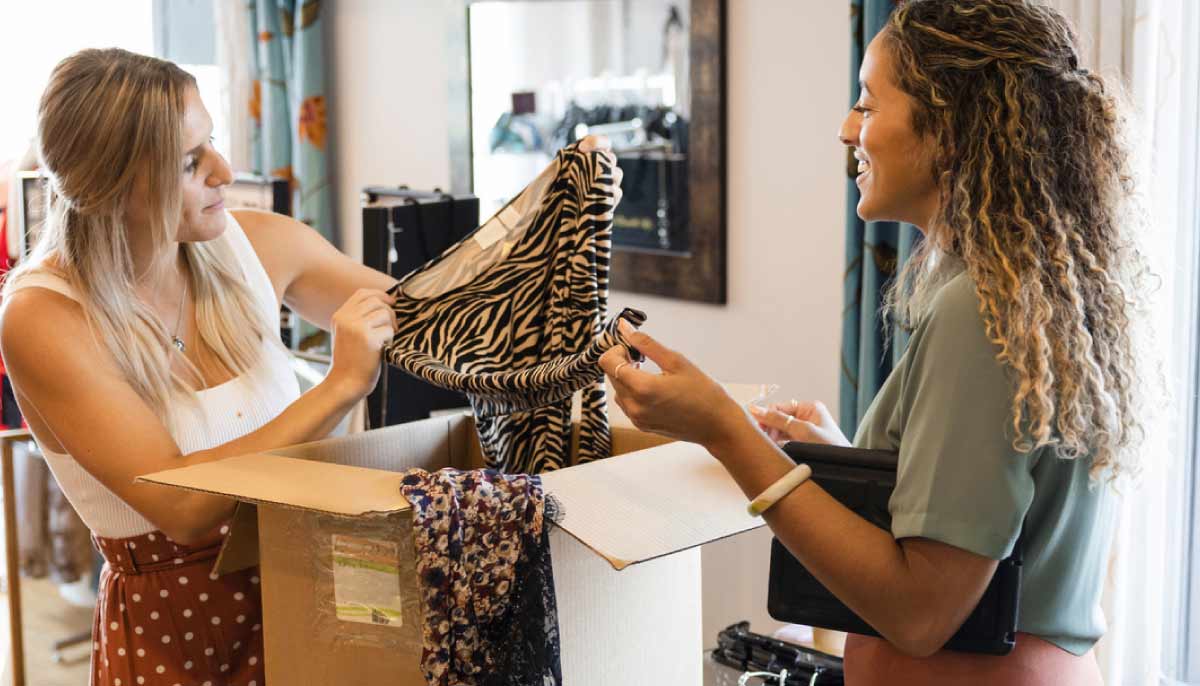
‘Tis the Season for eCommerce Returns
Online shoppers have come to count on, not only free shipping, but free returns as well. Experts say retailers can expect, on average, about $158 billion of merchandise sold during the holiday shopping season to be returned. While some brands are rethinking their eCommerce returns policies – shortening the return window or even charging a return or restocking fee – there’s a bigger picture to consider.
There’s an experience that goes along with the returns process. When done correctly, reverse logistics can provide business value in the form of insightful data that can be used to encourage consumer confidence through better business practices.
Costly rewind
Returns are expensive for retailers, plain and simple. Brands like Abercrombie & Fitch, J.Crew and Zara now charge for returns. Some companies offer free returns only to the most loyal customers. At DSW, for example, customers are charged for a return unless they are members of the company’s higher-tier VIP rewards programs, which require an annual spend of at least $200.
Not only are returns a costly step in the process, but when poorly executed – detrimental to the customer experience. On top of that, brands get dinged on their sustainability scorecard because of the impact reverse logistics has on the supply chain.
Creativity is key with eCommerce Returns
With the cost of eCommerce returns rising, brands need to get creative on how they navigate this space. Amazon keeps the process simple and always asks customers for information. Data collection can be more valuable to brands than getting their merchandise back.
Brands that are handling reverse logistics best are partnering with a 3PL who can resolve issues while gathering information. Why are you returning it? Was it the wrong color? Were we too slow?
Applying artificial intelligence (AI) to the reverse logistics operation can provide real-time consumer data which brands can aggregate to identify pain points in the supply chain.
A return to luxury
Returns and exchanges are components in the customer’s journey and the experience should be just as good on the way back as it was purchasing the product.
Luxury brand consumers are looking for that little something extra – that je ne sais quoi to their shopping experience and communication is key. The luxury shopping experience is about relationship building or, more accurately, building on the relationship the shopper already has with the brand. Luxury buyers tend to be more brand loyal precisely because they are served with consistent excellence. That excellence should include first call resolution for each contact.
Reverse logistics for luxury goods also requires a human touch. For example, a designer dress needs to be evaluated to determine if it is suitable to resell. Someone needs to make sure cosmetics are uncontaminated or if they need to be destroyed. High-end eyewear has to be examined, and cleaned and adjusted by hand before they’re ready for resale.
When dealing with reverse logistics for luxury brand costumers, it’s not about the returns or exchanges. It’s about boosting buyer confidence – showing consumers that a brand is committed to making sure their customers are 100% satisfied with their experience.
Trio of best practices
The buying and return experience should be frictionless. In fact, 96% of consumers said that free shipping was the most important consideration when shopping online, followed by more than three-quarters who said the same about free returns. Affluent shoppers were even more likely to favor a free-return policy.
Consumers have come to expect that they can shop where they want when they want. They also expect to be able to process returns and exchanges at the place that is most convenient for them.
Brands that embrace an omnichannel fulfillment approach strive to get merchandise as close to customers as possible. An experienced tech partner will have the infrastructure to manage this process.
The financial transaction of eCommerce returns should also be customer centric – providing refunds or exchanges as quickly as possible. Again, Amazon sets the standard by supplying quick turnaround on refunds. The faster customers get their money back, the more likely they are to keep shopping – tightening the window on the repurchase cycle.
Over the past few years, savvy consumers have learned to read the fine print of a brand’s policies on returns and exchanges. Still, many brands could be doing a better job of communicating with customers. Be up front and don’t make customers dig for pertinent information.
Protect your brand
Collecting data on customer returns can not only help improve the customer experience, but it protects brands. One online trend that has cost retailers is the practice of “bracketing.” Shoppers often “bracket” their purchases, meaning they’ll buy multiple sizes or colors of the same thing and send back the items they don’t want.
From a fraud protection strategy, a technology platform with AI will collect data that can help identify abuse and take action.
For example, if a customer has made returns five times in the past six months, that’s a red flag. Brands can inform those types of customers that while they are welcome to shop in-person in their stores, they are banned from their websites.
Data is the thermometer that protects brands against abuse and fraud. It’s a closed loop on customer communication and transparency.
Brands need to take a step back and evaluate their eCommerce returns strategy. It is an expensive yet important part of the customer’s journey and it should be as frictionless as every other part of the process. What is most valuable to brands long term is gaining insight on how to improve the entire customer experience.


